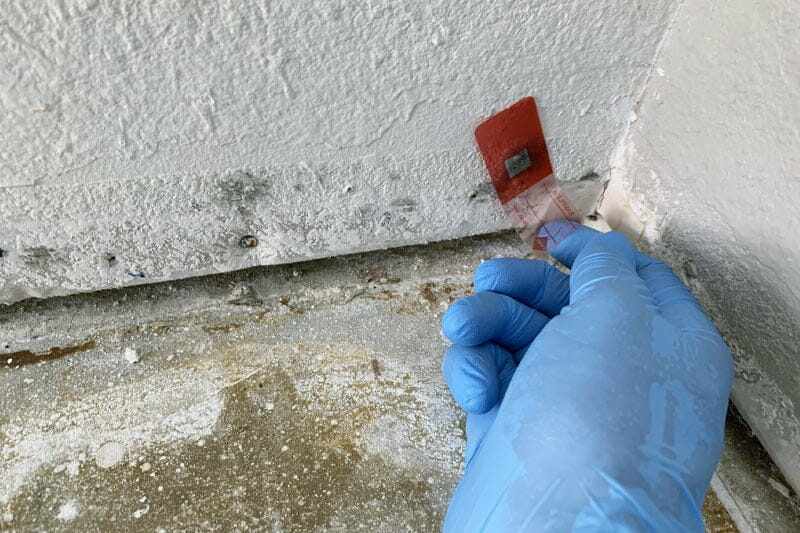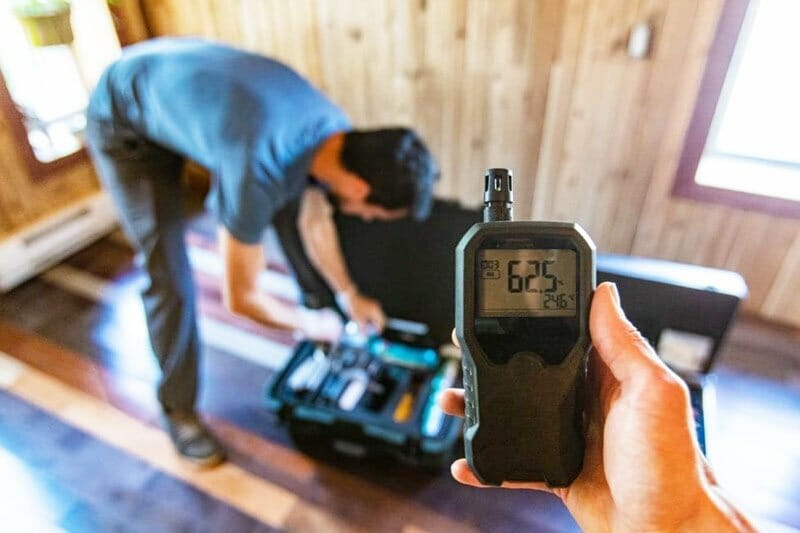Many companies provide free mold inspections, but often, this complimentary service leads to fees for the mold remediation.
Free mold inspection for renters is something offered by mold remediation companies because in most cases it does turn into a paying job for them. It’s a win-win.
Be sure to pick and choose who you get out for a free mold inspection on your rental property. Also, you need to be respectful of companies’ time. Get a free inspection if you think you might have mold and need it to be remediated.
What we cover
ToggleHow Can Renters Get a Free Mold Inspection?
Oftentimes, a free mold inspection is part of the package of a company’s mold remediation process. As a renter or a tenant, you should first be certain about the mold growth in your home, doing so allows the mold inspection to be productive.
Since mold remediations can cost you a considerable amount of money, you should first initially assess your home if it prompts a professional’s attention since they would usually push for mold remediation.
In choosing a mold company or a mold inspector, you should look for their certifications and other credentials, and seek a second opinion. If your initial inspector discourages a second opinion, you should take this as a red flag.
Also, if the landlord has failed to disclose damage or an issue in the property and this has caused mold growth, you can demand a free mold inspection.

Are Free Mold Inspections a Scam?
It is not undeniable that there are people in the mold remediation business that scam people into paying more than what was expected to be free. Although these operators do not represent the entire industry.
Before you ask a particular company to impact your mold problem for free, consider the following:
- Large mold growth: If your home has large mold growth, a mold inspection is an important and legitimate part of mold remediation. Homeowners will be then expected to pay for the professional mold remediation services.
- Small mold growth: However, if you only suspect small mold growth in your home, you should be wary about free mold inspections. It is in the mold company’s interest to find mold in your home, and charge you for their services as they remove it.
- Company’s reputation: If you have any doubt about the company that you seek to have a free mold inspection, it’s best to seek a second opinion or look for credentials and certifications about their services.
Mold Inspection vs Mold Remediation
The two are different processes, and most of the time, tenants and landlords confuse the two as the same processes.
Mold Inspection
A mold inspection pertains to the process of evaluating whether there is mold growth in a home or a building that is above economic levels.
The process of mold inspection may include a thorough investigation of the building history, an observation of the occupant’s or the tenant’s living behaviors, an inspection of the property, and mold testing.
Usually, a mold inspection would take around 2 hours. Here, the expert will evaluate the cause of the mold problem in the property, and assess the cause of it. After which, the results will be available for two days.
Mold Remediation
Mold remediation, also known as mold treatment, involves steps that help fix a mold growth that is found after the mold inspection. This may include resolving water problems and cleaning and removing the mold growth itself.
How Much Does a Mold Inspection Usually Cost?
Depending on multiple factors such as the size of your home, and the specific mold test that you seek, the cost of a mold inspection can vary. For reference, below are some of the average costs:
Mold inspection
- Average range: $648 to $1,010 (dependent on the size of the home)
Hiring an expert mold inspector
- Average range: $300 to $500
- Services include: checking possible mold growth spots, and verifying which test or steps to be done
Standard mold inspection
- Average range: $75 to $150
- Includes a basic mold test

Who Is Responsible for Dealing With Mold in Apartments/Properties?
The legislation concerning the tenant-landlord responsibilities when it comes to mold growth in properties is rather vague and often subject to disputes, there is a ballpark generalization about the responsibilities of both parties.
Both landlords and tenants are responsible for dealing with mold growth.
Landlords
Generally, landlords are responsible for paying the entire mold remediation process if the mold growth is because of the property’s state before the tenant has moved in.
For example, if the property already has roof leaks that have caused the mold growth, the landlord is liable to remove the mold and repair the leak. This is because tenants are not responsible to pay for the roof repair in the first place.
Tenants
Consequently, if the tenant’s behavior and habits are proven to cause mold growth, they are responsible for dealing with it. For instance, if you have failed to securely close windows or have kept carpets moldy, you will be held liable as a tenant.
Moreover, even if the tenant is liable to cover for the mold remediation, landlords are required by some laws to have the process in place to make the property habitable. Landlords can then charge the tenants for the expenses.
Mold Clauses in Lease Agreements
Sometimes, landlords include mold clauses in the lease agreements to stipulate a clear understanding when it comes to dealing with mold growths in the property. This sometimes aims to relieve them from any liability.
However, there was one court in Tennessee that refused to acknowledge the clause in the lease, ruling that it was against public policy. Ideally, the landlord and tenant should be partners in doing efforts in keeping the home habitable and maintained.
When Should You Get a Mold Inspection?
Water Damage
As a rule of thumb, if you have extensive water damage found in your home such as a broken pipe, or if you were recently flooded, you should immediately seek a mold inspection. Normally, mold only takes 2 days to grow.
Property Defects
Most renters would also want to have a mold inspection if they initially see that the prospective home has property defects or has been unoccupied for a long time. Such homes are susceptible to molds as they may have trapped moisture.
Mold growth is usually found growing along walls where warm moist air is condensing on cooler surfaces. They can also be found behind headboards, dressers, and closets.
Musty Odor
If you can smell a “musty” odor in rooms that have high water usage and humidity such as kitchens, bathrooms, laundry rooms, and basements, it is time to have an inspection and action to control the potential mold growth.

Steps in Controlling Mold Growth
While removing mold growth seems like the best idea especially when the growth has already been large, you can still adopt steps especially when it has not reached a concerning growth. This can also help you save on preventable expenses.
- Prevent water leaks from worsening, and repair leaks from roofs and plumbing
- Keep moisture away from walls, surfaces, and concrete slabs
- Open windows to increase airflow and proper ventilation. If there are no windows available, you can use a fan
- See to it that warm air freely flows into all areas.
- Install proper ventilation such as exhaust fans in laundry rooms, basements, bathrooms, and kitchens
- If your home has attics and crawl spaces, you should insulate and ventilate them to avoid unwanted moisture building up.
- If you have large furniture or items, make sure to move them a few inches away from the walls to allow proper air circulation
- Wet carpets, beddings, clothing, and other similar items should be cleaned and dried within 1-2 days to avoid mold growth. You can also consider removing damaged items if they don’t appear salvageable
- To help remove mold spores, you should vacuum and clean your home regularly














